From the creators of Ghost of Tsushima released in 2020, Ghost of Yōtei is a standalone game with a brand new protagonist and setting, this time in Hokkaido. Like its predecessor, Ghost of Yōtei is a third-person action adventure open-world game with combat, stealth and traversal puzzles with a heart-rending tale of loss, grief and vengeance.
One might be tempted to compare this year’s Assassin’s Creed Shadows, which is also a similar stealth and combat game set in Japan featuring a female protagonist on a quest for vengeance, but AC Shadows has a distinct Assassin’s Creed feel.
Both Naoe from AC Shadows, and Atsu from Ghost of Yōtei, are two very different characters, and there is no “tanky” Yasuke to help Atsu nor any romance between Atsu with non-player characters (NPCs).
Revenge is a dish best served cold
Ghost of Yōtei takes place in the island of Ezo, or what is now known as Hokkaido, in the tumultuous early 17th century, 300 years after the events of Ghost of Tsushima and during Lord Nariaki Saito’s invasion of Ezo. The stories do not link directly although there are some hints of Jin Sakai’s existence in Ghost of Yōtei, so there’s no need to play Ghost of Tsushima before Yōtei.
While Ghost of Tsushima deals with the grand scale of repelling the Mongolian invasion, Yōtei focuses more on the personal story of Atsu avenging her family who were slain by Lord Saito and his henchmen, collectively known as the Yōtei Six.
Left for dead, young Atsu overcame the odds and trained herself to be a formidable warrior forged in the wars of the Japanese mainland before returning home to seek vengeance on Lord Saito and the rest of the Yōtei Six as an onryō (a ghost or vengeful spirit in Japanese).
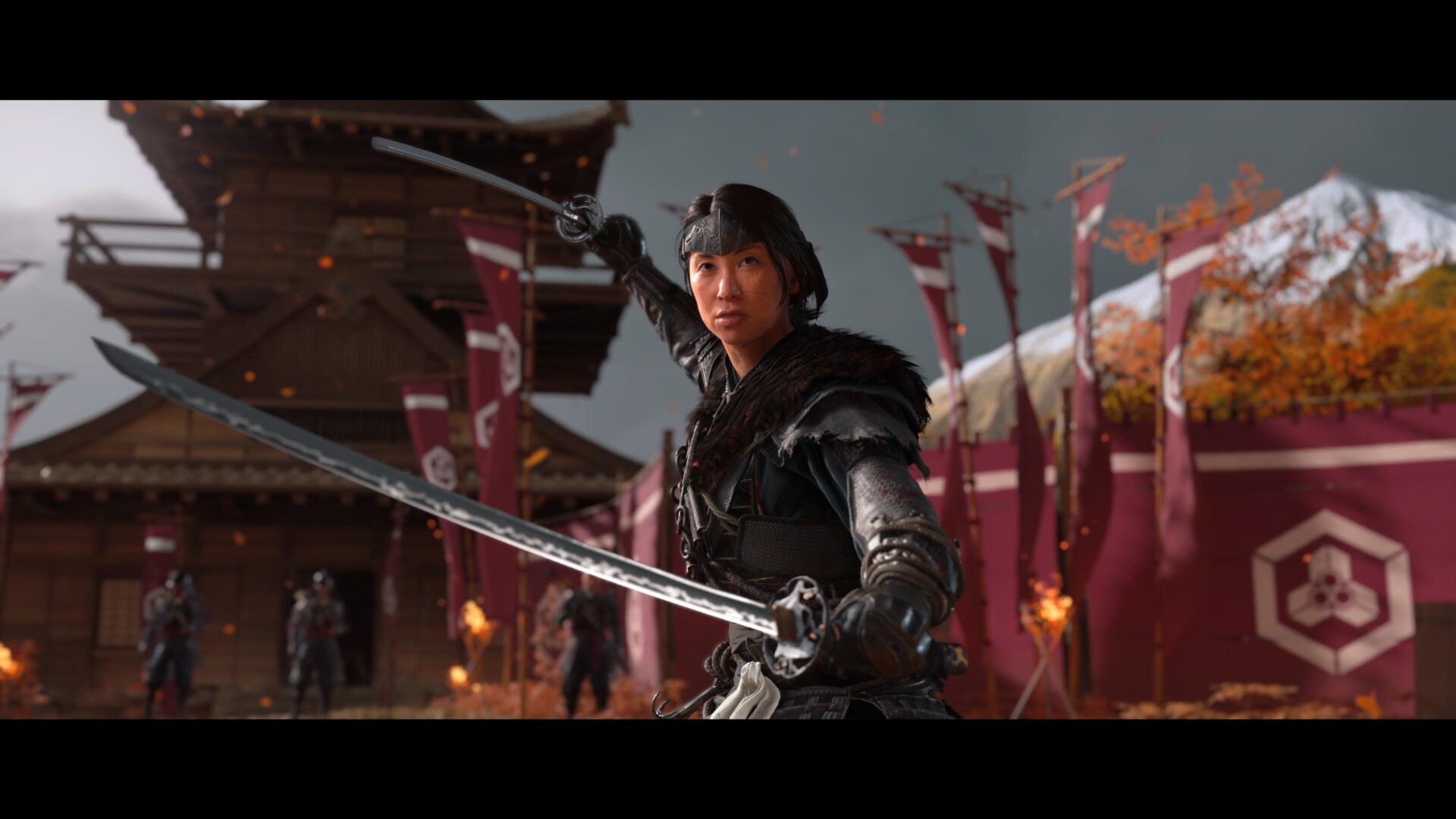
Character building for Atsu is so detailed and nuanced I feel like I know her as a real person, especially with flashbacks at her old home back to her childhood days. She is like the big sister who will bully you but is just as likely to stand up for you and beat up bullies. As an unconventional woman and a skilled warrior, she faces gender discrimination and misogynistic remarks, which she confronts with deadly defiance.
Her sharp wit, wry sense of humour as well as her no nonsense attitude towards mean-spirited characters is extremely entertaining. But Atsu isn’t all about blood lust and battles — she plays the shamisen, makes weapons at the forge and paints sumi-e ink drawings. These activities are cleverly incorporated using the touch pad and gyroscope on the PS5 DualSense controller, which makes for a highly interactive experience.
Atsu’s quest for vengeance takes her across the western Ishikari plains and the freezing Teshio Ridge in the east of Hokkaido. The game allows Atsu to freely travel across the regions, and even encourages her to visit her old family home in the Yōtei Grasslands to use her father’s forge to upgrade weapons and reflect on memories of the past.
In her travels, she helps out the inhabitants of the land as well as the indigenous Ainu people caught in a war between the invading forces of Lord Saito and the Matsumae clan defending their territory.
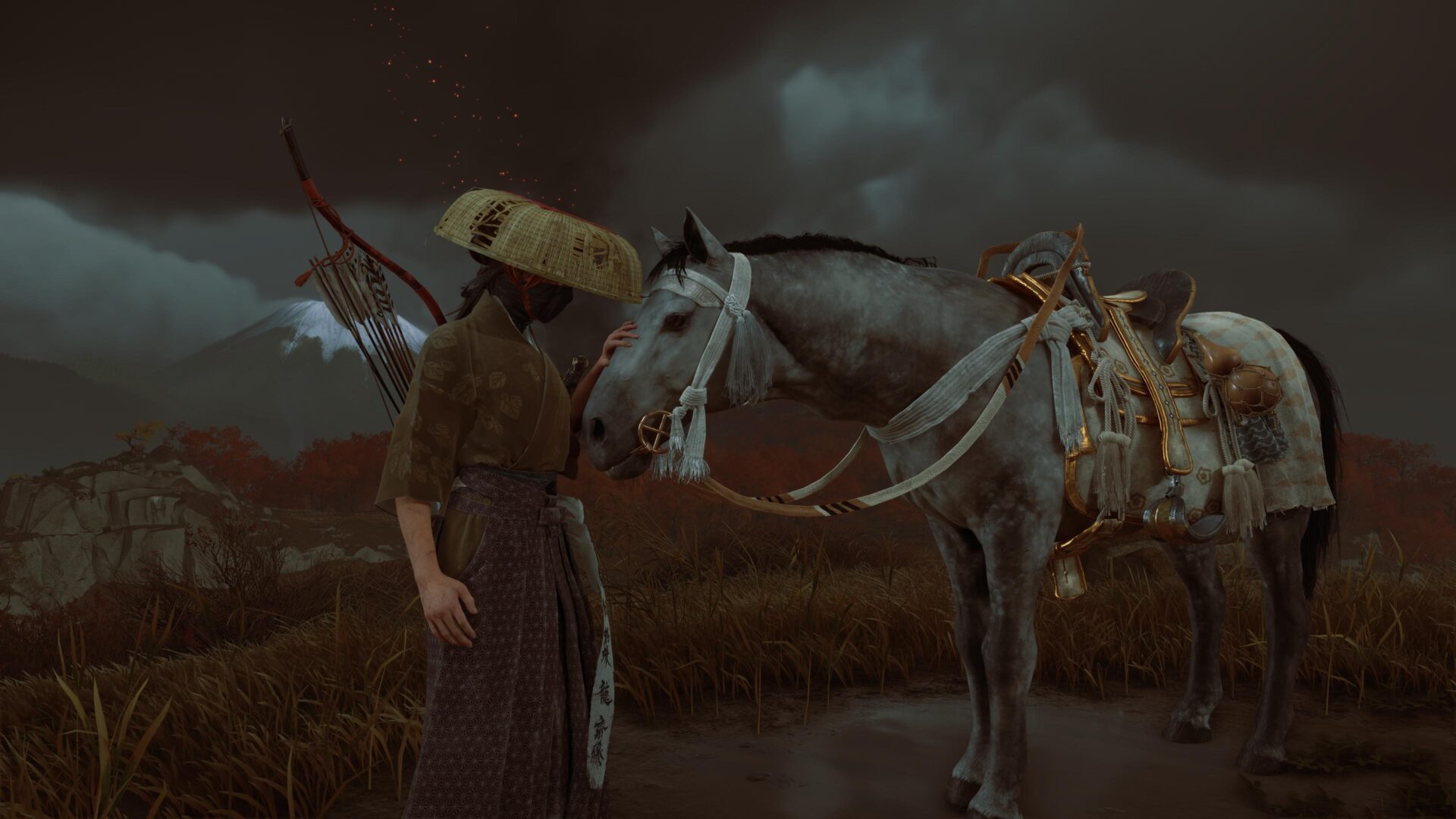
One of Atsu’s most endearing qualities is her kindness to animals like the fox, horse, bear cub and even feral wolves, offering them food, giving them head scratches and talking to them like people.
She has an especially close bond with her horse which she chooses and names at the beginning of the game. It is heartwarming to witness their bond as she will lean on the horse to sleep together at camp, and also chide the horse like she would a human when it flees from danger.
Ghost fighting
Whether you like to play as a straightforward swordswoman or a stealthy assassin, Ghost of Yōtei has all the moves covered. Atsu can trigger a “Standoff” to announce her presence and face off with enemies for a one-on-one standoff with a foe, or sneak around picking enemies off one by one using the bow or by assassination.
Like Ghost of Tsushima, combat requires timely parrying and dodging, as well as using the right moves against different types of enemies, so button mashing without thought or purpose will not work.
Atsu can learn to use the katana, double katana, the large odachi sword, the yari polearm and the sickle chain kusarigama under the tutelage of various weapon sensei.
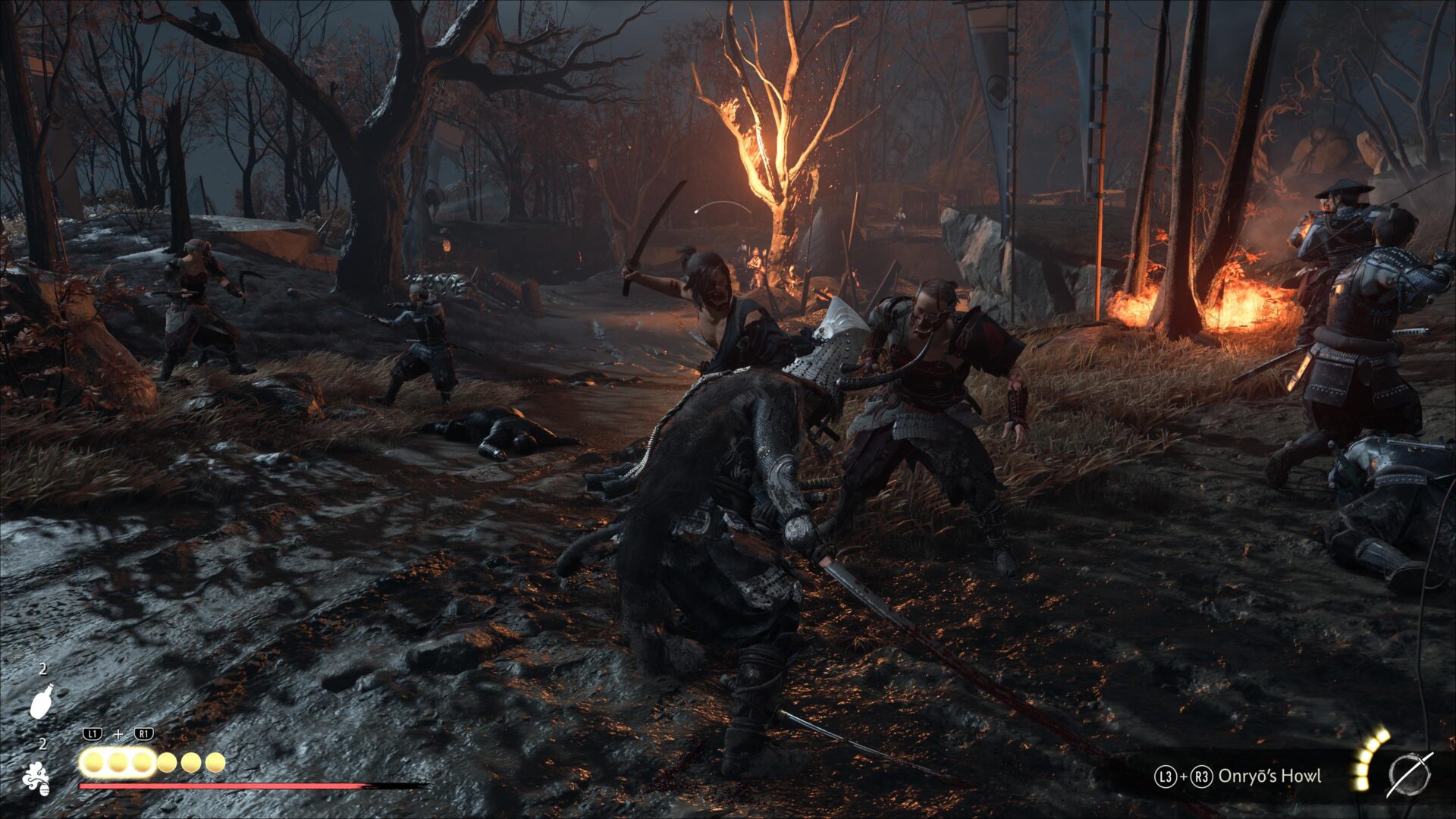
Switching to different weapons can make a huge difference in beating a horde of enemies armed with various weapons as well as during boss battles where the boss uses a variety of weapons. When facing hordes of enemies, I like to use the yari polearm to knock back enemies to give Atsu space then focus on individual enemies with the appropriate counter weapon.
Atsu can also use bows, bombs, blinding powder and flaming weapons in combat, which adds variety in how Atsu deals with her foes. My favourite weapon for stealth are the bows, which can deliver one shot kills from afar before leaping into the fray.
In addition, Atsu can also use a special limited move known as the Onryō’s Howl to terrify enemies and stun them into pausing their attacks, which is great for quickly dispatching some foes before they can react. This works like the Ghost Stance in Ghost of Tsushima that requires the meter to be charged by clocking a certain number of consecutive kills.
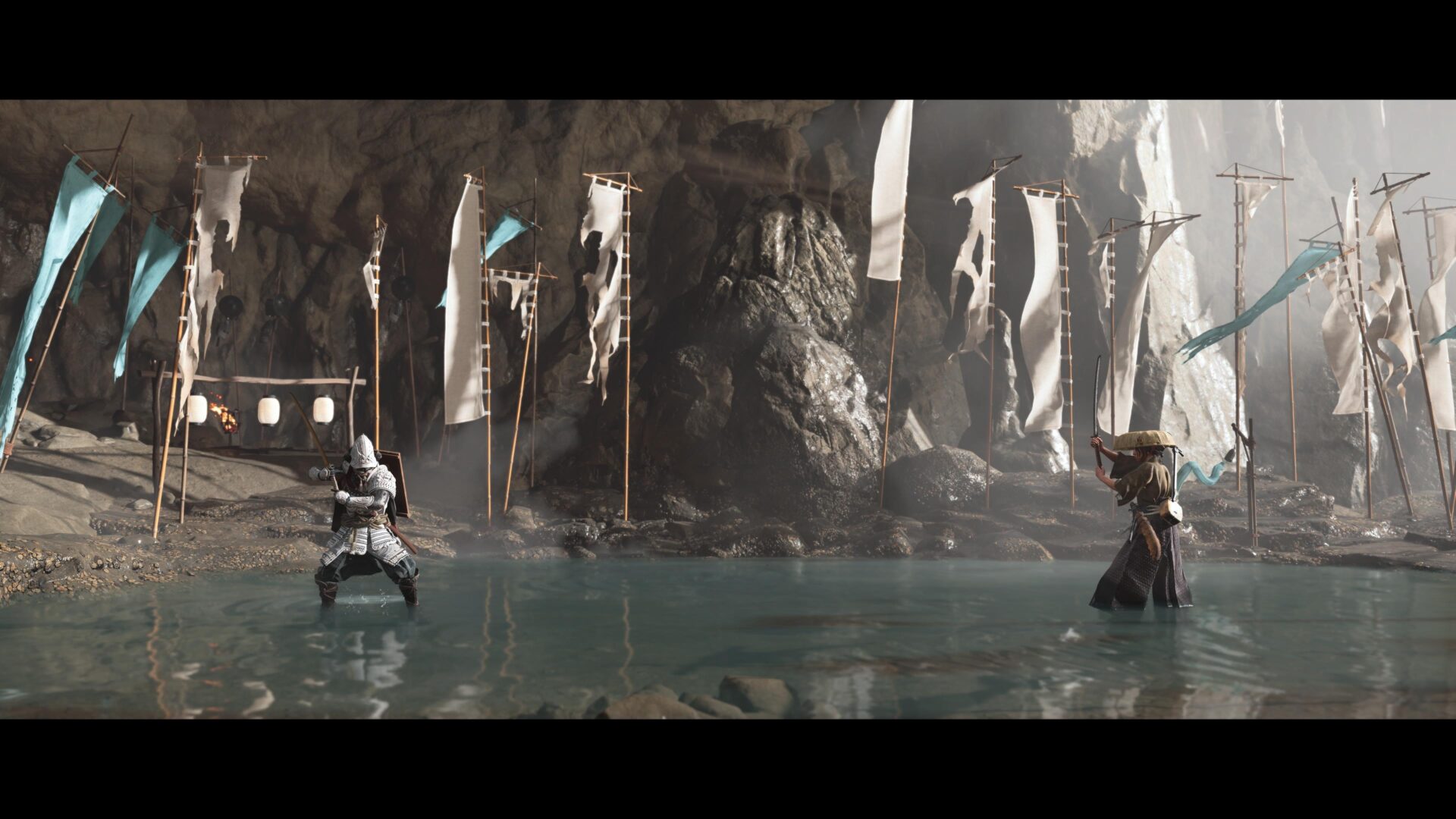
There are no medkits or potions to restore Atsu’s health during combat — instead, health is restored via utilising Atsu’s spirit, which in turn can be boosted by drinking sake although her vision will be blurred temporarily.
Atsu’s spirit level can be increased permanently by finding and playing the bamboo strike mini games, while her health levels are increased at onsens. But between her battles, Atsu can recover by resting at camps or bathing at onsens.
There is even a simple cooking minigame at the camp that can confer daily perks to Atsu. Thankfully, though, the actual cooking sequence can be skipped as it does take some time to grill the fish and mushrooms!
Swords, shamisens and skins
Atsu’s skill trees are split into Onryō, Melee, and Revenge, with skills for various weapon types as well as more generic skills for assassination and survival. Unlike games where one needs grind and clock as many kills as possible to level up, Atsu can only unlock skills by finding and praying at Altars of Reflection or learning from senseis. This means that exploration is more important than grinding for upskilling, as there is no levelling up with experience in the game.
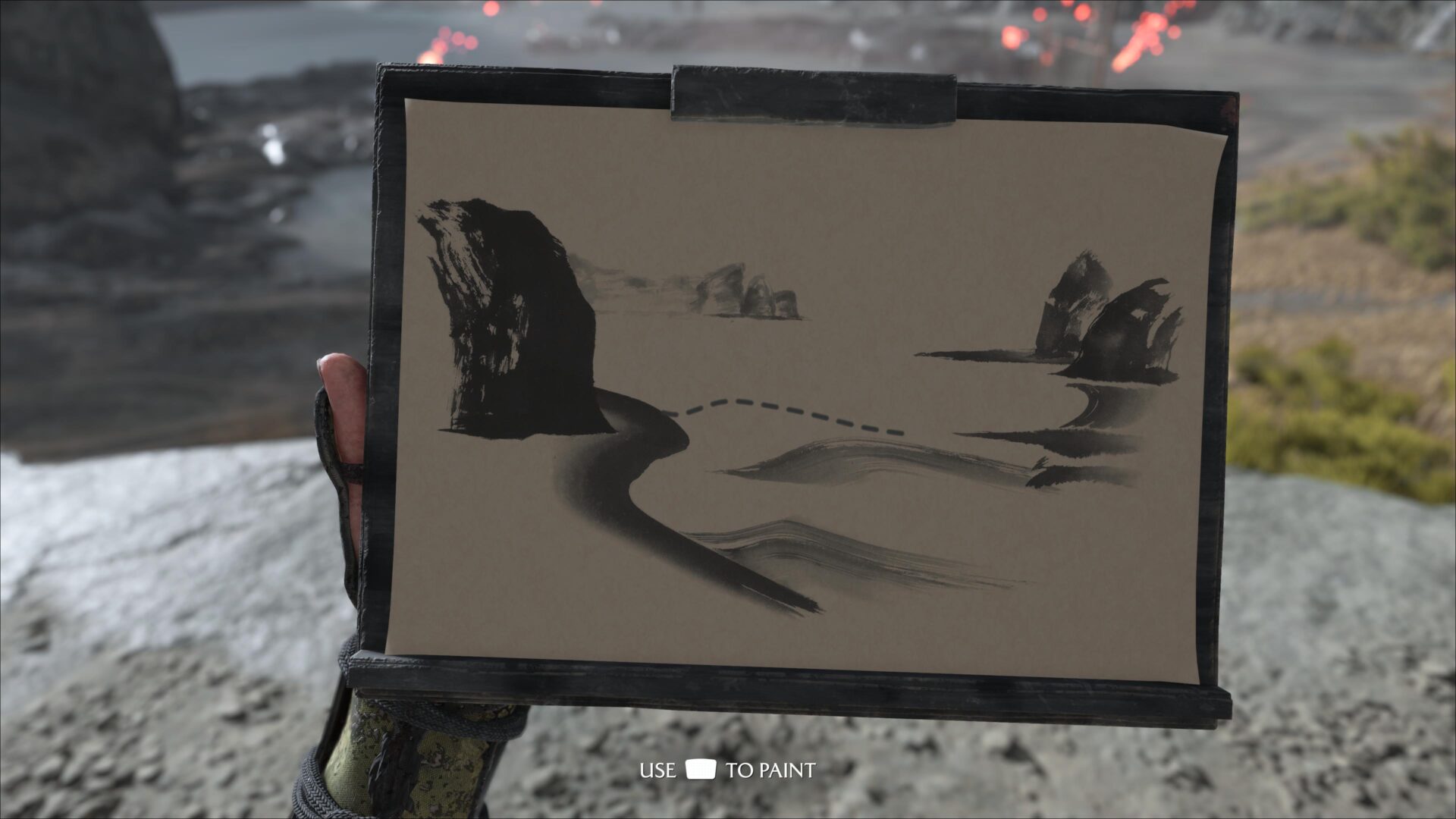
Atsu can also unlock skills related to the feral wolf by finding wolf dens and helping the wolf free its family, mostly by attacking Saito encampments and setting the wolves free. In return, the wolf can occasionally appear to help Atsu in battle, which can help turn the tide in some instances.
Besides switching weapons, you can create five different loadouts for Atsu’s armour, headgear, masks and charms. These loadouts are useful as they provide Atsu with pre-defined perks and abilities that can be switched out quickly depending on the challenges that Atsu will be facing.
For instance, an archer loadout can include the Dragonfly armour and all the charms that provide boosts for ranged attacks, while the Nine Tail Shinobi armour and appropriate charms can help Atsu in assassinations and stealth.
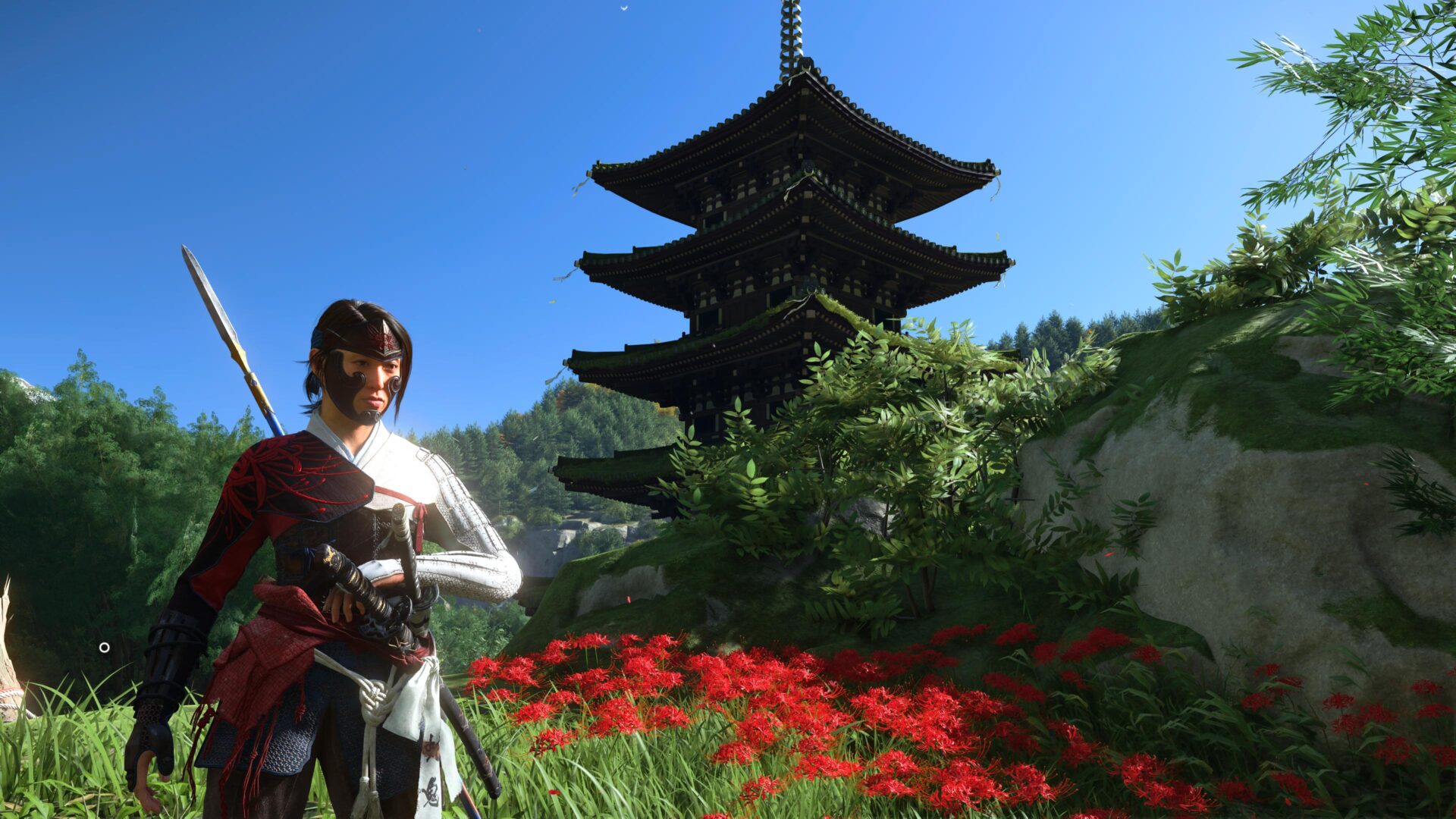
New armour and weapons are obtained by completing quests and training with the senseis. These can then be upgraded with crafting items in the form of metal ores, wood, steel and even raider masks which are scattered around or dropped by slain enemies.
Weapons can be upgraded at the forge in her old family home, while other equipment require experts like a bowyer, armourer and even a demolitions specialist to upgrade.
However, Atsu’s gear isn’t all utilitarian. Her armour, weapons, saddle and even her shamisen can be cosmetically enhanced using armour skins, dyes and weapon kits, which can be granted as rewards, purchased from merchants or found during exploration.
Exploring Hokkaido
Ghost of Yōtei depicts the stunning beauty of Hokkaido in amazingly varied detail, and the freely explorable open-world makes exploration an indescribably beautiful experience. It’s not just about taking in the scenery though, as there are plenty of rewards for Atsu to discover, such as increasing health and spirit, finding charms with useful perks, new skills, crafting materials, collectibles and activities.
Helpful animals like the golden birds can lead her to onsens (hot springs), bamboo strikes to upgrade her spirit or sumi-e sketching spots, and foxes can lead her to secret shrines or hidden charms. In addition, Atsu can unlock shamisen tunes by helping certain NPCs and completing side quests, which can point her to the direction of nearby places of interest when the melody is played.
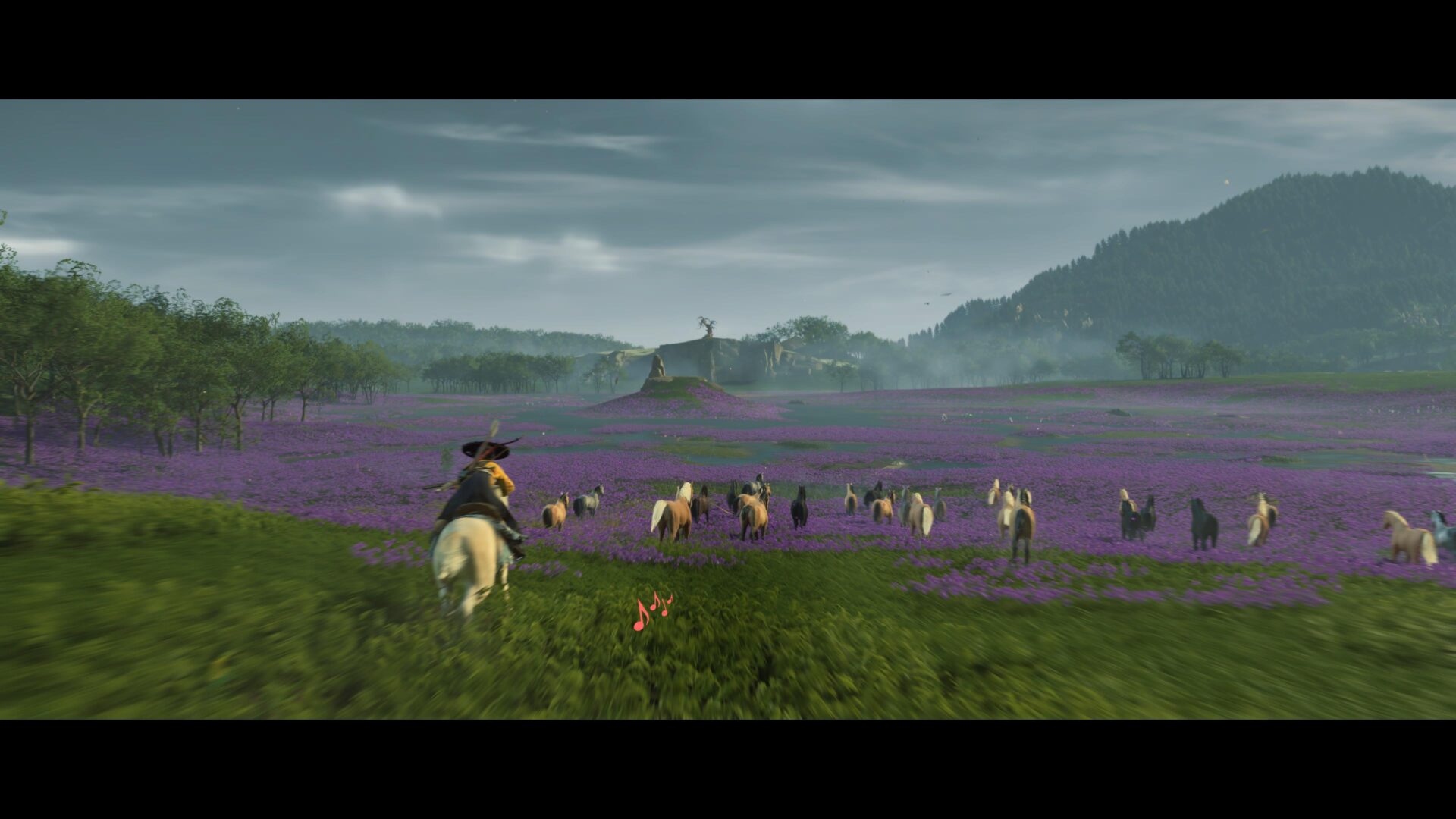
If you are desperate and feeling wealthy, the cartographer at the inn sells maps that can lead Atsu to hidden places of interest. The currency in the game comes in the form of coins, which is easy to obtain by selling resources, looting enemies, or playing a coin flicking game at inns that lets Atsu bring in a fair amount of coin easily.
Ghost of Yōtei offers plenty of side quests from NPCs, bounty boards as well as hearsay and myths. I especially enjoy hearing the storyteller’s myths as they are depicted in the style of ink drawings that tend to have sad stories of the characters whom Atsu has to find and fight, such as a homicidal general who is just a father driven to madness by grief.
In her travels, Atsu will also meet the indigenous Ainu people who can trade with her and offer her side quests. She can also give back lost Ainu collectibles in return for armour kits.
Fast travel can be activated on the map but I prefer to travel on foot or horseback to enjoy the scenery, even though there is a risk of random ambushes by bounty hunters or hostile encounters with Saito’s forces.
Although Atsu can camp anywhere to restore her spirit, she deliberately camps outside of inns and settlements with her steed even when I tried to put her near other people. Despite her preference for solitude, merchants and other travellers sometimes intrude and share her camp fire but she is always reaching for her sword warily.
Even if exploration isn’t really your thing, do at least try to find the hard-to-reach Altars of Reflection and solve the traversal puzzles in order to unlock a new skill in Atsu’s skill tree. These require some jumping, climbing and grappling, and can be quite tricky at times, but the new skills are critical for Atsu to enhance her combat prowess.
Sublime sensory experience
Just like Ghost of Tsushima, Ghost of Yōtei’s stunning graphics makes the game a sight to behold. The changing weather conditions, the varied landscapes of violet lavender fields and red maple trees, frozen rivers and dramatic mountains, and breath-taking sunrises and sunsets makes every frame postcard-worthy.
Ghost of Yōtei is clearly heavily influenced by samurai films and westerns in terms of the cinematography, shot composition and music. It shows off its cinematic flair with modes from influential directors like Akira Kurosawa, with a dramatic and harsh black and white filter; as well as Takashi Miike, with copious blood and mud effects.
I personally enjoy the Miike filter for its depiction of brutality although it does limit the view and make the hordes surrounding Atsu hard to see in combat.
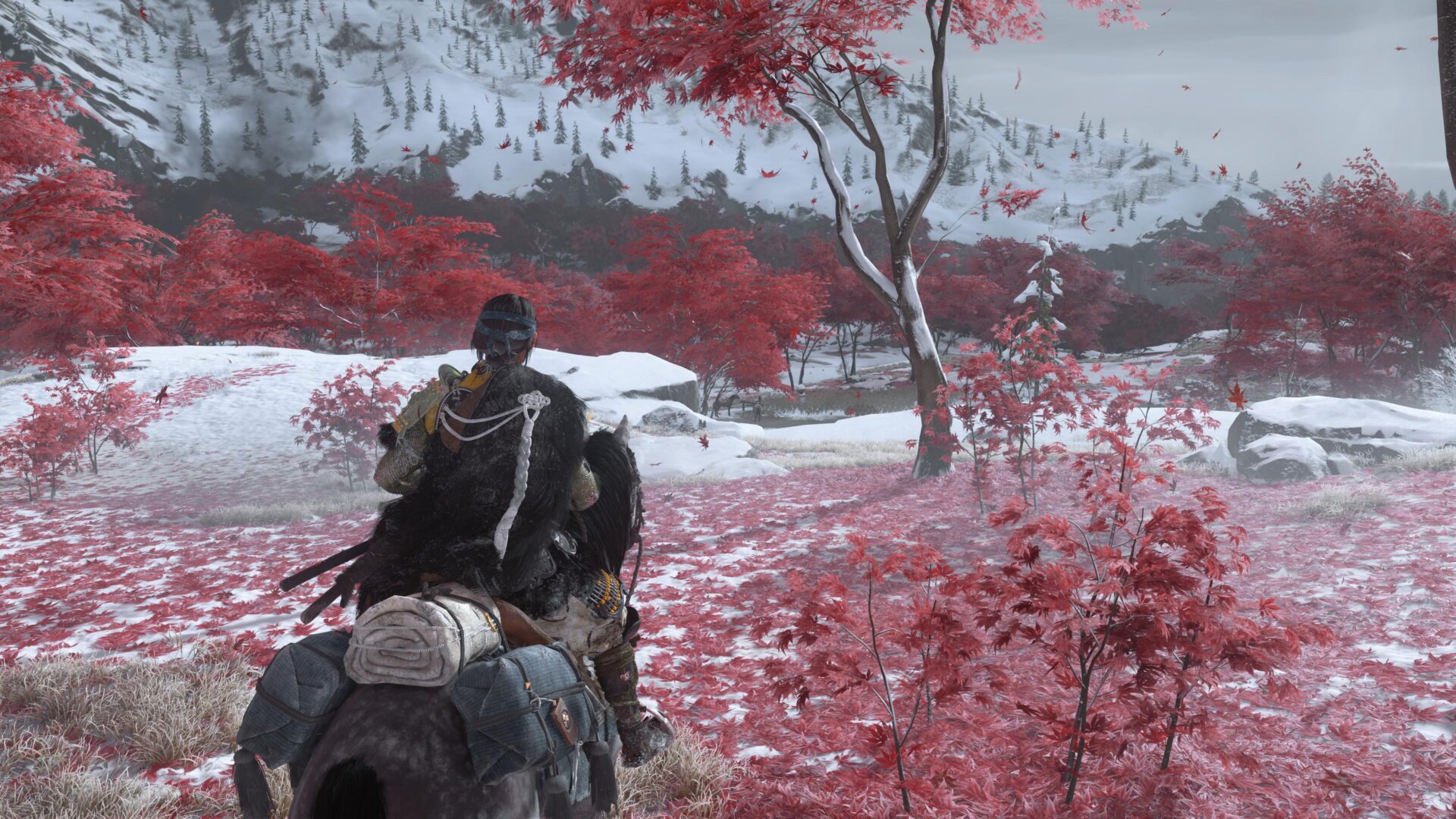
Ghost of Yōtei’s music is quiet and reflective with a sparse soundscape featuring traditional Japanese instruments like the shamisen and flute. The beat picks up during battles and high speed chases but the mood is mostly contemplative. If you prefer a more modern take, there’s an option for a lo-fi musical beat by Shinichiro Watanabe for a chill vibe during exploration.
Although the game has a Photo Mode, Atsu’s deadpan expression doesn’t offer much variety, so it’s hard to get her to break character making silly faces and poses. However, it is great for getting postcard-perfect shots with Atsu and the stunning scenery.
Ghost of Yōtei cleverly incorporates the use of the Sony PS5 DualSense controller’s multi-sensory abilities. The sounds of wind and shamisen music come through the controller, while you get vibrations when sensing places of interest. You stroke the touchpad to paint sumi-e and rock the controller to cook at the campfire and pound metal at the forge.
TL;DR
If you enjoy combat-focused, samurai-themed action adventure games and love the Ghost of Tsushima, the Ghost of Yōtei is a must-play.
Although the story is rather heavy with plenty of violence, death and brutality, there are peaceful moments of contemplation like painting sumi-e, playing the shamisen and bathing in an onsen. Atsu’s bitter journey of growth driven by her personal vendetta against the Yōtei Six as well as her stoicism, wit and kindness make her a memorable protagonist.
With beautiful scenes of Hokkaido, challenging combat and varied attack styles offered by multiple weapons, Ghost of Yōtei is a perfect balance of action, drama and artistry. Exploration and traversal puzzles offer valuable rewards that bestows new perks and abilities on Atsu, which emphasises exploration more than mindless grinding for progression.
However, gamers who prefer to focus on fast-paced combat, executing and chaining combos and grinding for experience to level up might find Ghost of Yōtei’s combat style too slow and deliberative.
Ghost of Yōtei is available for the PlayStation 5 at S$97.90.


